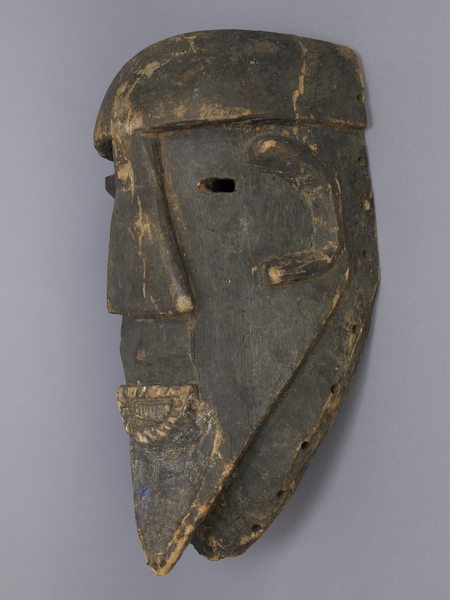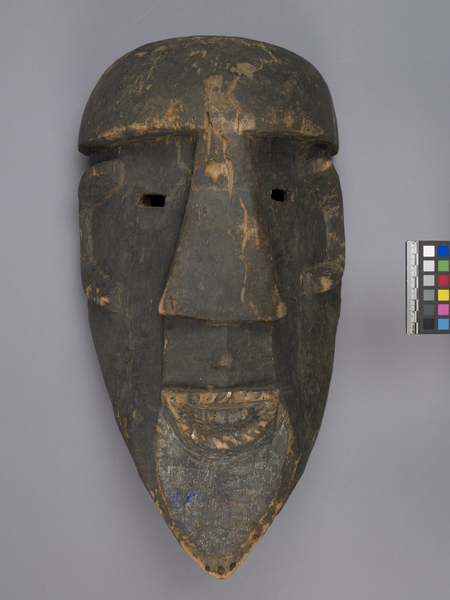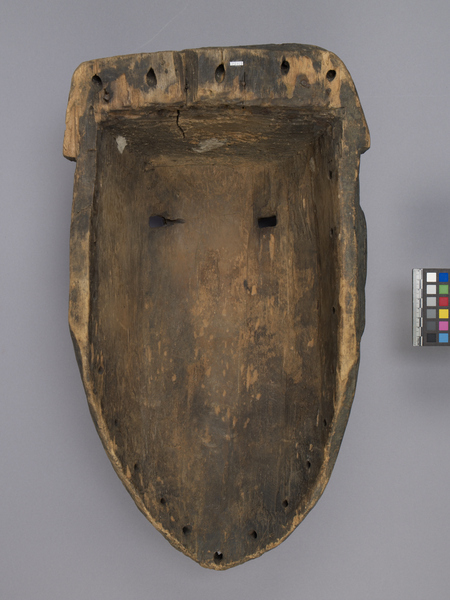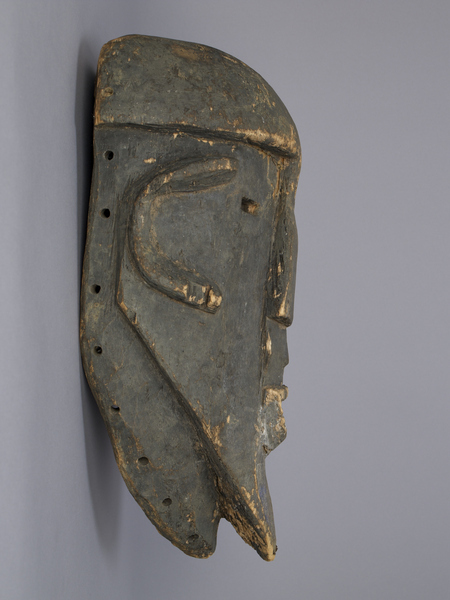Mask Item Number: 3123/23 from the MOA: University of British Columbia




Description
Very large wooden mask. Face has a pointed chin with three nails emerging slightly from tip. Mouth is small and protruding, positioned in a smile, with shallow gouges along lower lip and lightly carved teeth inset. Nose is large and flat, wide at nostrils and narrowing toward forehead, between small rectangular holes cut through the wood for eyes. Ears are large protruding half circles inside the upper jaw line. Top of mask is rounded with a flat top. Many holes are bored through the rim, set at somewhat equal distances.
History Of Use
Male kifwebe mask used and made by the bwadi bwa kifwebe society. The bwadi are a group of mystics that use masks as mediums to harness and display buchi or masende to exercise control over social tensions and retain allegiance to political leaders. Buci, or witchcraft, is an internal force that resides in the heart and stomach; masende, or sorcery, is an external force that rests in the eyes. Buci is an inherited mystical power, while masende is learned and accessible to everyone. These masks have no magical power; the bwadi who wears and uses the mask imbues it with mystical power. Kifwebe masks are traditionally carved around the time a new chief is ritually installed or when the community goes out for hunts. The carvers are called kihanga or kilongo and they traditionally make the masks out of kifwenkese and kicipicipi wood, as they have mystic properties. The masks are made in an uninhabited area, instead of in the village, as the creation of the masks is only for the carver or bwadi bwa kifwebe society members to see. Kifwebe masks can be male or female, and are performed in rituals. Male masks demonstrate and assert power through erratic movements and boisterous displays of strength; female masks emphasize fluid motions and footwork. The male masks generate magical force in relation to disorder and change, whereas the female mask appeals to the goodwill of the ancestral spirits through dance. Female masks, as a result, allow the user to contact ancestral spirits.
Iconographic Meaning
Colour symbolizes whether a mask is male or female; a dark coloured mask is male and a white mask is female. The crest of the mask indicates the level of the wearer's magical skill and experience.
Item History
- Made in Democratic Republic of the Congo
- Owned by Cornelia Hahn Oberlander before July 22, 2015
- Received from Cornelia Hahn Oberlander (Donor) on July 22, 2015
What
Who
- Culture
- Songye ?
- Previous Owner
- Cornelia Hahn Oberlander
- Received from
- Cornelia Hahn Oberlander (Donor)
Where
- Holding Institution
- MOA: University of British Columbia
- Made in
- Democratic Republic of the Congo
When
- Ownership Date
- before July 22, 2015
- Acquisition Date
- on July 22, 2015
Other
- Condition
- good
- Accession Number
- 3123/0023